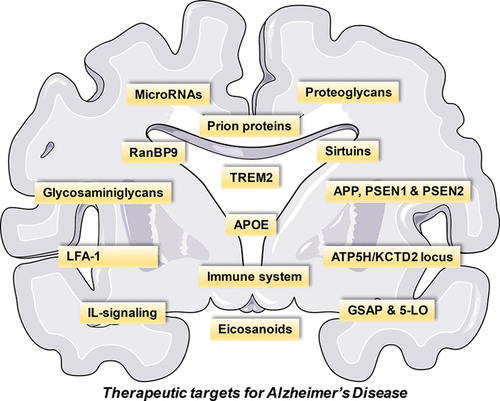当前位置:
X-MOL 学术
›
ACS Pharmacol. Transl. Sci.
›
论文详情
Our official English website, www.x-mol.net, welcomes your
feedback! (Note: you will need to create a separate account there.)
Molecular Pathogenesis and Interventional Strategies for Alzheimer's Disease: Promises and Pitfalls.
ACS Pharmacology & Translational Science ( IF 4.9 ) Pub Date : 2020-03-26 , DOI: 10.1021/acsptsci.9b00104 Shashikala Bhute 1 , Deepaneeta Sarmah 1 , Aishika Datta 1 , Pallavi Rane 1 , Amit Shard 2 , Avirag Goswami 3 , Anupom Borah 4 , Kiran Kalia 1 , Kunjan R Dave 5 , Pallab Bhattacharya 1
ACS Pharmacology & Translational Science ( IF 4.9 ) Pub Date : 2020-03-26 , DOI: 10.1021/acsptsci.9b00104 Shashikala Bhute 1 , Deepaneeta Sarmah 1 , Aishika Datta 1 , Pallavi Rane 1 , Amit Shard 2 , Avirag Goswami 3 , Anupom Borah 4 , Kiran Kalia 1 , Kunjan R Dave 5 , Pallab Bhattacharya 1
Affiliation

|
Alzheimer’s disease (AD) is a debilitating disorder characterized by age-related dementia, which has no effective treatment to date. β-Amyloid depositions and hyperphosphorylated tau proteins are the main pathological hallmarks, along with oxidative stress, N-methyl-d-aspartate (NMDA) receptor-mediated excitotoxicity, and low levels of acetylcholine. Current pharmacotherapy for AD only provides symptomatic relief and limited improvement in cognitive functions. Many molecules have been explored that show promising outcomes in AD therapy and can regulate cellular survival through different pathways. To have a vivid approach to strategize the treatment regimen, AD physiopathology should be better explained considering diverse etiological factors in conjunction with biochemical disturbances. This Review attempts to discuss different disease modification approaches and address the novel therapeutic targets of AD that might pave the way for new drug discovery using the well-defined targets for therapy of the disease.
中文翻译:

阿尔茨海默氏病的分子发病机制和干预策略:承诺和陷阱。
阿尔茨海默氏病(AD)是一种衰老性疾病,其特征是年龄相关性痴呆,迄今为止尚无有效的治疗方法。β-淀粉样蛋白沉积和过度磷酸化的tau蛋白是主要的病理学标志,氧化应激是N-甲基-d-天冬氨酸(NMDA)受体介导的兴奋性毒性和低水平的乙酰胆碱。当前用于AD的药物疗法仅提供症状缓解和认知功能的有限改善。已经探索了许多分子,这些分子在AD治疗中显示出令人鼓舞的结果,并可以通过不同途径调节细胞存活。为了采用生动的方法来制定治疗方案,应考虑多种病因并结合生化紊乱来更好地解释AD生理病理。这篇综述试图讨论不同的疾病改良方法,并解决AD的新治疗靶标,这可能为使用明确定义的治疗疾病的靶标为新药发现铺平道路。
更新日期:2020-03-26
中文翻译:

阿尔茨海默氏病的分子发病机制和干预策略:承诺和陷阱。
阿尔茨海默氏病(AD)是一种衰老性疾病,其特征是年龄相关性痴呆,迄今为止尚无有效的治疗方法。β-淀粉样蛋白沉积和过度磷酸化的tau蛋白是主要的病理学标志,氧化应激是N-甲基-d-天冬氨酸(NMDA)受体介导的兴奋性毒性和低水平的乙酰胆碱。当前用于AD的药物疗法仅提供症状缓解和认知功能的有限改善。已经探索了许多分子,这些分子在AD治疗中显示出令人鼓舞的结果,并可以通过不同途径调节细胞存活。为了采用生动的方法来制定治疗方案,应考虑多种病因并结合生化紊乱来更好地解释AD生理病理。这篇综述试图讨论不同的疾病改良方法,并解决AD的新治疗靶标,这可能为使用明确定义的治疗疾病的靶标为新药发现铺平道路。











































 京公网安备 11010802027423号
京公网安备 11010802027423号